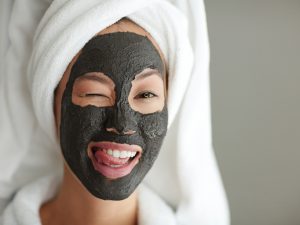



Face masks have become an integral part of our beauty routine. They offer a variety of benefits, such as removing impurities, hydrating the skin, and helping to reduce the appearance of fine lines and wrinkles. However, with so many different types of masks available, it can be difficult to know which ones to use and how to use them properly. In this blog, we’ll explore the dos and don’ts of using face masks, so you can get the most out of your skincare routine.
Different skin types require different types of masks. For example, if you have oily or acne-prone skin, a clay mask can help to draw out impurities and unclog pores. If you have dry skin, a hydrating mask can help to restore moisture and improve texture. Make sure you choose a mask that is specifically formulated for your skin type.
It’s important to read the instructions on the mask before applying it. Some masks may require a certain amount of time to be left on the skin, while others may need to be rinsed off immediately. Following the instructions will ensure that you get the most out of your mask and avoid any adverse reactions.
To get the most out of your mask, it’s important to prepare your skin beforehand. Start by cleansing your face to remove any makeup, dirt, or oil. You can also use a gentle exfoliator to remove any dead skin cells, which will allow the mask to penetrate deeper into the skin.
When applying the mask, make sure to apply it evenly across your face, avoiding the eye and lip area. This will ensure that the mask is effective and that you don’t waste any product.
Leaving a mask on for too long can be counterproductive and can actually cause your skin to dry out. Make sure you remove the mask at the recommended time, which is usually around 15-20 minutes. If you’re unsure, refer to the instructions on the packaging.
After you’ve removed the mask, it’s important to follow up with a moisturizer to lock in the benefits. This will help to keep your skin hydrated and nourished, and will ensure that the mask has a lasting effect.
While face masks can be beneficial for your skin, it’s important not to overdo it. Using a mask too often can actually strip your skin of its natural oils and cause irritation. Stick to using a mask once or twice a week, depending on your skin type.
If you have any cuts, bruises, or open wounds on your face, it’s important not to use a mask. This can cause further irritation and may lead to infection.
As mentioned earlier, leaving a mask on for too long can be counterproductive. If you leave a mask on for too long, it can actually cause your skin to dry out and become irritated. Make sure you follow the instructions on the packaging and remove the mask at the recommended time.
If you’ve never used a particular type of mask before, it’s important to do a patch test first. Apply a small amount of the product to your inner arm and wait 24 hours to see if you have an allergic reaction. If you experience any redness, itching, or swelling, do not use the mask.
When applying a mask, it’s important to avoid the sensitive areas around your eyes and mouth. If the mask comes into contact with these areas, it can cause irritation or even inflammation. To prevent this, apply the mask evenly across your face, avoiding the eye and lip area.
After removing a mask, it’s important to wash your face with water to remove any residue. Leaving residue on your face can clog your pores and cause breakouts.
Now that we’ve covered the dos and don’ts of using face masks, let’s explore more.
Clay masks are ideal for oily and acne-prone skin. They work by drawing out impurities and excess oil from the skin, leaving it looking refreshed and balanced. Clay masks can also help to unclog pores, which can prevent breakouts from occurring.
Sheet masks are great for all skin types, as they come in a variety of formulas to address different skin concerns. Sheet masks are usually made of paper or cloth, and are soaked in a serum that is packed with active ingredients. Sheet masks are a quick and easy way to give your skin a boost of hydration and nourishment.
Hydrating masks are perfect for dry and dehydrated skin. They work by infusing the skin with moisture, which can help to plump up fine lines and wrinkles. Hydrating masks usually contain ingredients like hyaluronic acid, which can hold up to 1000 times its weight in water.
Exfoliating masks are great for all skin types, but especially for those with dull or rough skin. Exfoliating masks work by removing dead skin cells, which can improve skin texture and promote cell turnover. Exfoliating masks usually contain ingredients like alpha hydroxy acids (AHAs) or beta hydroxy acids (BHAs), which can help to gently dissolve dead skin cells.
Brightening masks are great for those with uneven skin tone or hyperpigmentation. They work by reducing the appearance of dark spots and discoloration, leaving the skin looking brighter and more even. Brightening masks usually contain ingredients like vitamin C, which can help to boost collagen production and improve skin elasticity.
Using face masks can be a great addition to your skincare routine, as long as you follow the dos and don’ts. Make sure you choose the right mask for your skin type, read the instructions, and prep your skin before applying the mask. Avoid overusing masks, and always do a patch test before trying a new product. By following these simple tips, you can get the most out of your face masks and achieve healthy, glowing skin.
Sustainable Shades For many DIY enthusiasts and design aficionados, a fresh coat of paint is…
Cruelty-Free Solutions for a Healthier You Chronic inflammation can be a relentless foe, disrupting our…
Unleashing Your Brain's Potential In today's fast-paced world, maintaining sharp mental focus and cognitive agility…
Exploring DIY Organic Makeup Fixers For the eco-conscious beauty enthusiast, the quest for flawless makeup…
A Sensitive Exploration The clean beauty movement has taken the beauty world by storm. Consumers…
Taming the Mane Frizz – the bane of smooth hair dreams. It can transform a…
This website uses cookies.